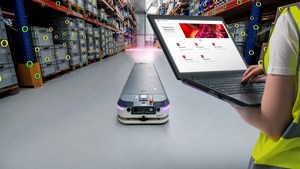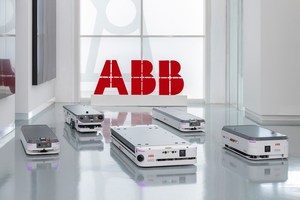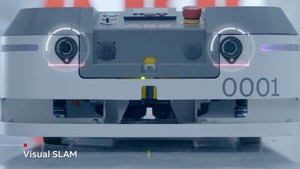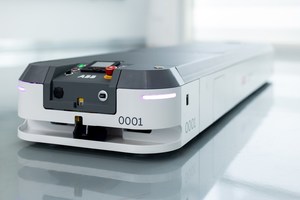

|
Edward Lowton
Editor |


|
| Home> | Plant, Process & Control | >Automation | >Software turning robotic opportunities into reality |
Software turning robotic opportunities into reality
06 September 2024
Have you ever wondered if your production line could benefit from using robots? If robots could transform your costs, cut energy use, boost quality, and dramatically reduce waste? If you can think it, the strong probability is that today’s robots can do it. Julian Ware explains

Thanks to the latest developments in robotic technology, the traditional barriers to entry that have prevented companies turning the dream of automation into reality have been swept away. Today’s design and programming software tools combine with digital support solutions to make it easier than ever to get started with little or no previous experience. With the expanded possibilities they bring, almost any production team can now turn an idea into a highly efficient and flexible robot installation that delivers real production benefits.
Imagine
Developments in software are opening new possibilities for visualising precisely how robots will operate and interact with their surroundings before deploying them on the factory floor. ABB’s RobotStudio offline programming tool, for example, enables complete installations to be modelled, tested and refined in a virtual environment. Using the software, a full range of scenarios can be tested, and the robot’s behavior and interactions accurately modelled. This provides the assurance that the simulation will match what happens in real life and will deliver peak performance from the outset, without risk to workers or surrounding machinery.
A key feature recently incorporated into the software is a new automatic path planning feature that determines the optimum robot path almost instantly, ensuring the lowest cycle time while also minimizing energy use. The impact of the robot’s movements on any surrounding cables can also be modelled, offering the ability to carry out any fine tuning to reduce the risk of collisions and anything that could limit cable life. Another feature helps to identify where to place fences and safety zones to avoid clashes, interferences, and potential accidents that could occur during real-life operation.
Realise
Once the planning has been done, the next stage is to move from the virtual to the real world as quickly and easily as possible. There are various tools and strategies available to reduce the time and complexity of getting robots up and running.
Using advanced motion technology and available for a variety of applications, ABB’s RobotWare controller software enables robots to be programmed to perform the required task or tasks whilst achieving the highest performance, precision and consistency, even at high speeds.
Another option is block-based programming software. Using easy-to-understand pre-configured command blocks, the software enables users to quickly and easily program a robot without having to learn complex coding. A user-friendly handheld FlexPendant can also be used to program collaborative robots (a.k.a. cobots) and/or six axis industrial robots, using simple controls and an intuitive user interface that can be mastered in minutes.
Modern cell-based production often requires flexible transport of components and work in progress from one cell to another. This requires Autonomous Mobile Robots (AMRs) to find their way around factories that might change their production layout and where people and other vehicles may be moving about.
Visual SLAM (Simultaneous Localisation and Mapping) technology uses cameras mounted on the AMR to build up a real time picture of the surrounding area and any moving objects. The cameras detect and track features in the environment, building a constantly updated 3D map and enabling the AMR to recognize its position in the environment and navigate through it quickly and safely.
Elevate – and re-imagine
The journey does not end with deployment. The final step is to continue to find ways to elevate and evolve the robot at every opportunity, addressing any issues as they arise and adapting its capabilities to meet changing demands. The lifeblood of any performance optimization process is data. Unlocking data on key parameters such as speed, cycle time, throughput, idle time, and energy use and using it to finetune performance will ensure the robot is working at its optimum.
OptiFact is ABB’s solution that makes it easier than ever for businesses to collect, manage and analyze data from robots. Featuring customizable dashboards that provide an instant picture of robot status, including cycle times, diagnostics and alarms, OptiFact can help increase production uptime by 20 percent to boost productivity.
Julian Ware is UK and Ireland sales manager for ABB robotics
- True smart flow measurement offered
- Transform precision & repeatability
- Robotic innovations
- Smart sensor for low voltage motors
- Bot on the chain gang
- Fastest palletising robot
- ABB’s new IRB 1200 can help make machines 15% smaller and 10% faster
- Online calculator demonstrates scope for savings with robots
- Seminar on robot automation
- Precision picking and palletising
- Latest software
- Compact robot controller
- Standard machine elements from Elesa
- test baner
- Baking automation
- Higher payload
- Power supplies controlled via web
- New Eiger freezer door installed as business heats up at leading meat packaging company
- Linear and rotary combination
- High temperature chain fluid





















